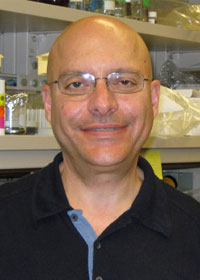Simon Halegoua

Professor
PhD, SUNY Stony Brook
Centers for Molecular Medicine Building (CMM)
Office: Room 534
Lab: Room 535
Office: (631) 632-8736
Fax: (631) 632-6661
Training
Simon Halegoua was awarded a B.S. degree in Biochemistry at Stony Brook University in 1974 and continued on to receive a Ph.D. in Molecular Biology in 1978. He was a postdoctoral fellow in Molecular Neurobiology at the Salk Institute from 1978 to 1982. In 1982, he joined the faculty of the Department of Neurobiology & Behavior at Stony Brook University as Assistant Professor and was promoted to Associate Professor with tenure in 1988. In 1994 he was promoted to Full Professor. He served as Interim Chair of the Department from 2006-2008. Professor Halegoua has served as the Director of the Center for Nervous System Disorders since 2002. He served on the Editorial Boards of the Journal of Neuroscience and the Journal of Biological Chemistry.
Research
The survival and function of all neurons are controlled by families of neuronal growth factors, which send retrograde signals across the synapse and up the axon, to reach the cell nucleus in the soma. The best-studied family of neuronal growth factors is the Neurotrophins (NTs), including the prototypic Nerve Growth Factor (NGF). The NTs control neuronal phenotype including axon growth, the cell cycle, neurotransmitter metabolism, electrophysiological characteristics and synaptic strength. Signaling from the NT receptor, Trk, involves the initiation of multiple signaling cascades that culminate in post-translational control of protein function, as well as translational and transcriptional controls of gene expression.
A central question for NT signaling lies in the differential signaling capability
over time and space. Differential signaling is mediated by NT acting over seconds
vs. minutes or hours. NTs must also signal biochemically from the nerve terminal over
long axonal distances to the soma. We first proposed a now well-accepted model for
this signaling via endosomal vesicles containing NT and Trk. We have identified the
first molecular component, Pincher, for forming and trafficking these signaling endosomes.
